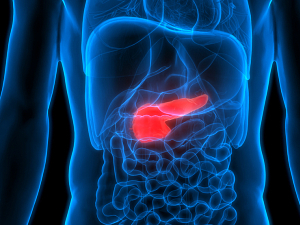Alcohol and opioid use are established risk factors for recurrent pancreatitis, but the effect of other substance use after an episode of acute pancreatitis has been unclear.
Brigham and Women’s Hospital researchers recently conducted the first comprehensive study on healthcare utilization and readmission among U.S. patients with acute pancreatitis who use opioids, marijuana, or a combination of recreational drugs. Vivek Kumar, MD, an attending in the Division of General Internal Medicine and Primary Care, Julia McNabb-Baltar, MD, MPH, an attending in the Division of Gastroenterology, Hepatology and Endoscopy, and colleagues report in Digestive Diseases and Sciences on several factors that predicted 30-day readmission in this population.
Methods
Using the Nationwide Readmission Database, the researchers identified 25,795 adults who were hospitalized in 2017 with a principal diagnosis of acute pancreatitis and had one or more diagnosis codes indicating substance use. They searched codes for alcohol, opioids, cannabis, cocaine, sedatives, other stimulants, other hallucinogens, other psychoactive drugs, inhalants, and miscellaneous.
The team excluded patients with only alcohol use because an earlier Digestive Diseases and Sciences paper reported on the readmission risk in alcohol-related pancreatitis.
Characteristics of the Cohort
The demographics of the cohort were concordant with those of substance users in the U.S.: male predominance (63%), Medicaid as the primary insurer for 39%, low income (65% had household income ≤$55,999 according to zip code), and 95% resided in an urban location. The mean age was 44.
67% of patients used a combination of substances, 18% used only opioids, and 15% used only cannabis. During the index hospitalization, 8% of patients left against medical advice.
Primary Outcome
The primary outcome measure was the 30-day readmission rate, defined as an unplanned hospital readmission for any non-traumatic cause. Of the 25,686 patients discharged alive after their index hospitalization, 3,752 were readmitted within 30 days, a rate of 15%.
Comparison of Index Admissions and Readmissions
Several outcomes were significantly worse during readmissions than during index hospitalizations:
- In-hospital mortality—0.42% during index hospitalizations vs. 0.81% during readmissions (P=0.02)
- Rates of acute cardiac failure—1.3% vs. 2.34% (P<0.001)
- Rates of shock—0.39% vs. 0.91% (P=0.003)
- Need for endoscopic retrograde cholangiopancreatography—2.85% vs. 3.88% (P=0.03)
- Mean length of stay—4.51 vs. 4.75 days (P=0.04)
The total length of hospitalization for patients readmitted within 30 days was 17,801 days, adding a total hospitalization cost of $36 million and total hospitalization charges of $150 million.
Predictors of 30-Day Readmission
Factors that independently predicted a higher risk of 30-day readmission were:
- Chronic pancreatitis—OR, 1.95
- Self-discharge against medical advice—OR, 1.62
- Treatment at the highest-volume centers—OR, 1.41
- Charlson comorbidity index ≥2—OR, 1.18
- Increasing length of stay—OR, 1.01
- More severe disease on discharge—OR, 1.44
Two factors were associated with lower odds of readmission:
- Female gender—OR, 0.71
- Private insurance—OR, 0.82
Decreasing the Risk of Readmission
Not all of these risk factors for 30-day readmission are modifiable. However, they can be used to identify which substance users with acute pancreatitis are likely to be rehospitalized and require more meticulous discharge planning.
